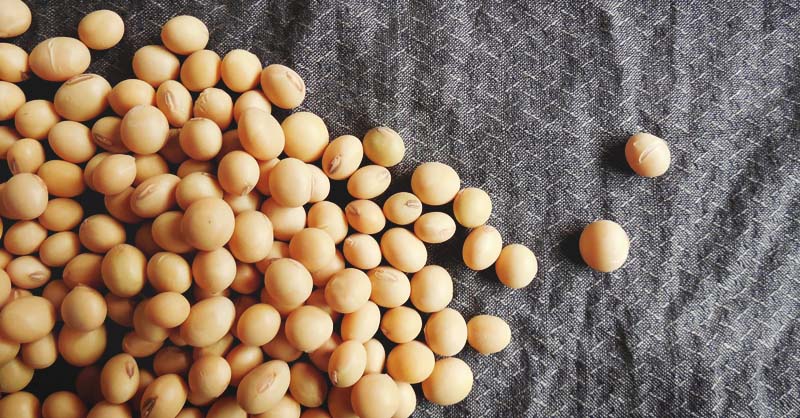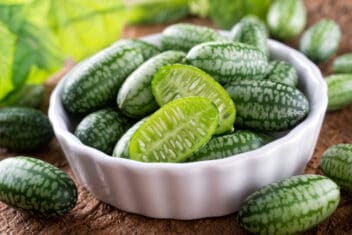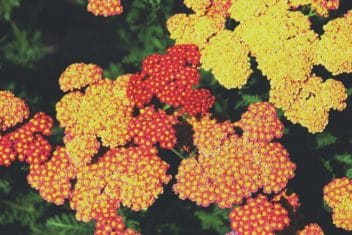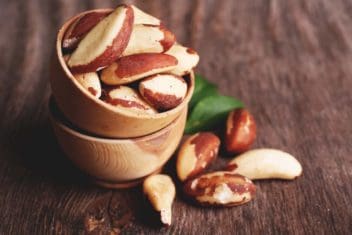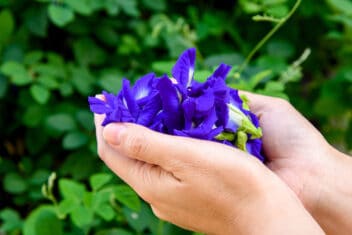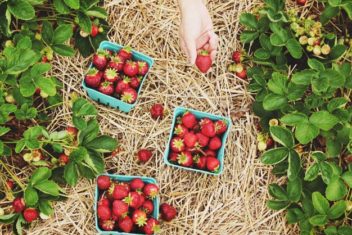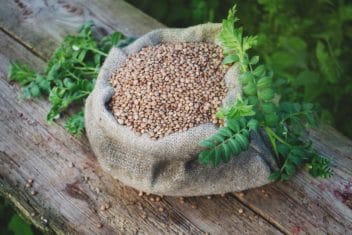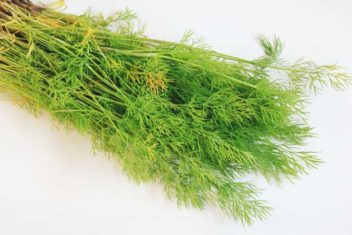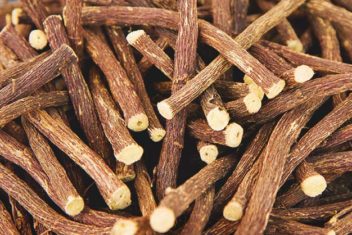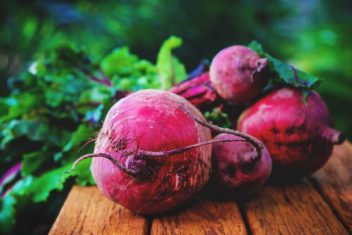Believe it or not, when I started growing soybeans, they were the first type of bean I tried. At the time – about 10 years ago – edamame was making waves as a snack food. I decided to try growing them because I figured they’d make a great afternoon snack. I quickly learned that they weren’t the same as other types of beans because they have unique needs and care requirements. My first harvest was lackluster, but the taste was out of this world. Nothing beats the flavor of freshly picked edamame.
Despite my troubled first round, I decided to plant the beans again. Soybeans, in my opinion, require a lot of effort to eat, especially when it comes to shelling the beans from their pods. I found that the reward is worth the effort, and eating them one-by-one makes the work fun.
Your garden will appreciate soybeans, too. The cute white flowers on the soybean plant attract pollinators like butterflies to the garden. The beans are also incredibly nutritious and are an excellent source of protein for vegetarians and vegans.
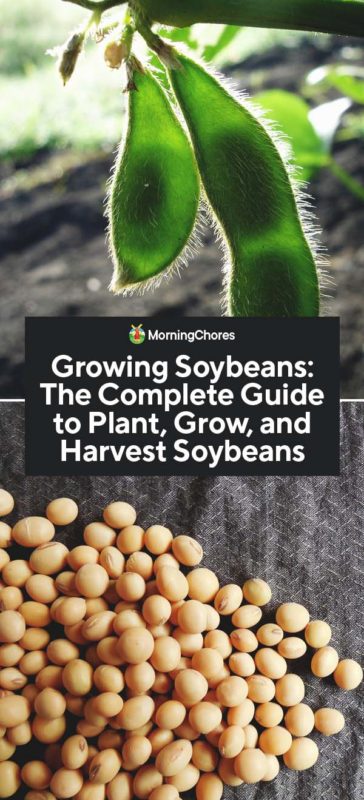
Soybean Varieties

There are a whole bunch of different soybean varieties that you can plant in your home garden. Wondering which one to settle on? Here are some popular varieties along with their favored uses.
- Tohya – An early maturing soybean that yields pods on short, stocky plants. Great for eating fresh.
- Kuroshinju – Very nutritious soybean variety nicknamed ‘Black Pearl’ because the beans blacken when cooked. Pods are easy to harvest and the beans have a fuller, sweeter flavor than other varieties.
- Chiba Green – Produces large plump beans that lend themselves to eating fresh or cooked. Plants grow taller than some other varieties but are still fairly compact.
- Midori Giant – Produces lots of beans that are best eaten fresh. Its bush-like growth habit requires no support.
- Hokkaido Black – Unique black beans are actually easier on the digestive system than other soybeans. Great fresh or for making Japanese tea.
- Shirofumi – Beans have a sweet taste and nutty flavor profile. Pods must be picked quickly to prevent beans from drying out.
- Black Jet – Another black soybean variety. Pods grow on tall bushy plants. This is a unique variety perfect for the gardener wanting to try something new.
Planting Soybeans
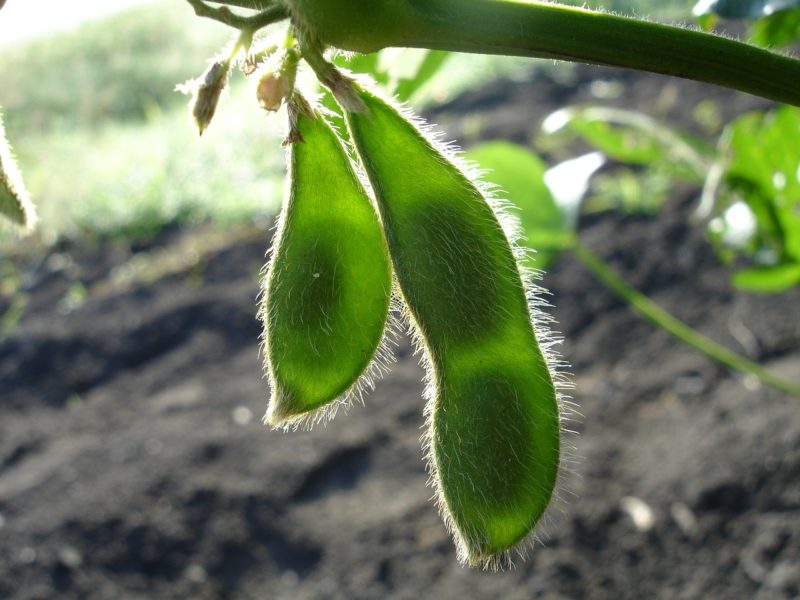
Sun and Soil Requirements
Growing soybeans is similar to other
When to Plant Soybeans
Growing s
Direct Sowing
Add compost to the intended planting area and direct sow the seeds. Like other types of beans, soybeans don’t do well when transplanted because of their shallow roots. Put beans in the ground 2-3 weeks after the last frost date, when soil temperatures are about 60°F. Plant seeds at a depth of 1-2 inches.
Spacing
Space beans about 4-6 inches away from one another with 24 inches between rows. If you’re using the square foot gardening method, plant 9 per square foot.
Soybeans have a similar growth habit to bush beans, so there’s no caging or staking required. Some folks may prefer to provide support, however, especially those living in windy areas.
Caring for Soybeans
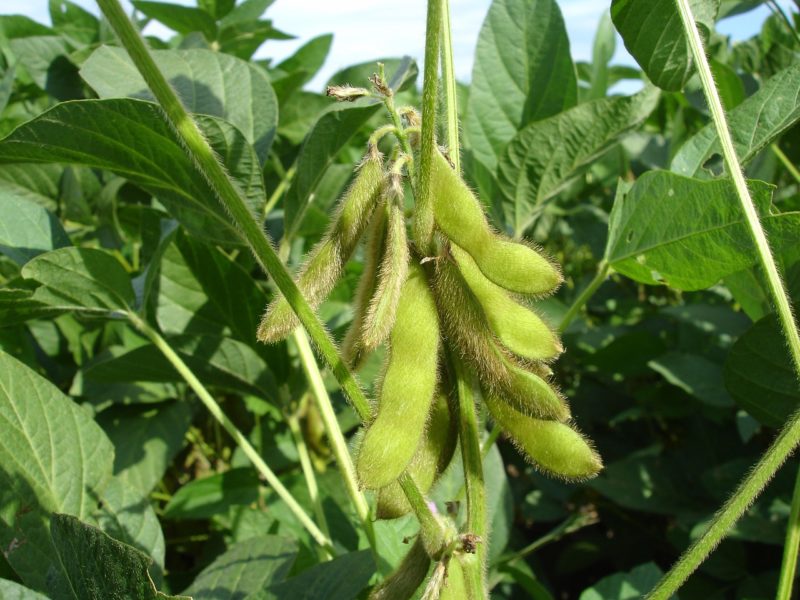
Wondering what to do once your soybean seedlings have sprouted? Here are some care tips to help you out.
Protect Growing Soybeans
If there’s one thing you need to know about growing soybeans, it’s to keep them warm. If you have a random occurrence of frost after planting, use frost covers to protect your soybeans. Don’t leave them exposed, they’ll suffer if they experience a frost.
Watering
Regular watering is important for beans. Giving the plants even amounts of water is especially vital once your soybeans begin to produce flowers and pods.
Mulching
Mulching helps keep the soil warm, conserves moisture, and reduces weed growth, so go ahead and mulch the base of your soybean plants.
Weeding
Take care when weeding soybeans. Remember that beans don’t enjoy being transplanted. Why? Their roots are shallow and don’t take well to being disturbed. Aggressive weeding is likely to mess with plant roots.
Fertilizing
There’s no need to feed your soybeans with nitrogen-based fertilizers once they’re planted. Just make sure to amend your planting area with compost prior to sowing, and again at mid-season.
Succession Sowing
Beans, in general, are an ideal crop to succession sow. Soybeans are no exception. Stagger your sowings for a continuous harvest of fresh pods. You’ll need to keep your plantings fairly close together since soybeans require a long hot growth period. Wait a week or two after your first sowing and plant another set of seeds.
Crop Rotation
Avoid growing soybeans where you’ve sown any beans the year previous to avoid spreading disease.
Soybean Problems and Solutions
Wondering what could go wrong when growing soybeans? In my experience, not that much. Most problems are encountered by large-scale agricultural operations growing soybeans for commercial purposes. But here are a few issues the home gardener may come up against.
Problems
- No pods – Not seeing any pods forming on your soybean plant? If you’re noticing a few pods falling off your plant, don’t be alarmed. It’s normal. But if you’re left with no pods to harvest, then there’s an issue. It could be environmental factors that are contributing to your pod situation. Too much moisture can encourage disease and stunt plant growth. Lack of moisture is another culprit as is too much shade. While soybeans like it hot, extreme heat may also cause the plant to drop or not produce pods.
- Empty pods – It might only be that patience is required on your part. Soybeans are not a crop for the impatient gardener. It can take over a month for the pods to fill out once they have set. If you’ve been waiting and still have empty pods on your hands, it may be dealing with a soil imbalance.
Critters
You’re likely to have more problems with mammals heading into your garden for a snack than bugs. Deer and small mammals like to munch on the pods as a snack.
Mexican Bean Beetles
In the home garden, there aren’t too many soybean pests to worry about. You may have issues with Mexican Bean Beetles, but picking them off or spraying them with a homemade solution can help you battle an infestation.
Aphids
Aphids are easy to handle since the little bugs can’t hold onto foliage once sprayed with a strong stream of water from the garden hose. After you spray them, treat plants regularly with neem oil.
Leafhoppers
Leafhoppers love to munch on leaves, which turn yellow and start to curl. Use a homemade spray to get rid of them. They’re more common in southern climates.
Fungus
Unfortunately, soybeans are prone to a number of fungal diseases like powdery mildew, root rot, charcoal rot, Cercospora leaf blight, and Sclerotinia stem rot. But with some care, you can avoid them.
Keep your plants properly spaced out to avoid crowding. Plants that are too close together may encourage moist conditions and thus be more susceptible to disease. You also want to avoid watering overhead and over watering.
You may also want to select resistant varieties. Be sure to rotate your crops, till the soil in the winter and keep gardens weeded.
Bacterial Blight
Bacterial blight is caused by a bacteria that spreads in wind and water. It enters through wounds in the soybean plant, which is why pest management is vital. You’ll see brown spots on leaf margins, which will turn red and fall out of the leaf. Pick resistant varieites, till soil in the fall and spring, and use a copper fungicide to control it.
Companions for Soybeans
Companion planting ensures that friendly plants are growing next to each other. The best companions for any plant are those that will help one another thrive, or at the very least won’t compete for nutrients. Here are the best and worst companions for soybeans.
Best companions
- Corn
- Squash
- Potatoes
- Cucumbers
- Strawberry
- Celery
- Summer Savory
Worst companions
Avoid planting soybeans next to allium family plants such as:
- Onion
- Garlic
- Chives
Harvesting and Storing Soybeans

Soybeans are typically picked when immature and the beans are not yet wholly dry inside the pod, 70-160 days after planting. Size is a good indicator of when it’s time to pick edamame. Once the pods are a few inches long and somewhat plump, it’s okay to harvest. Just make sure the pods are a little chubby. Otherwise, you may pick pods that are empty, without any beans inside.
If you want to make a soy product like tofu, you’ll need to let the pods mature fully before picking so you can harvest the dry beans. Wait for leaves to turn yellow and pods to brown. At that point, the seeds will be dry and ready for storage.
Edamame pods will keep for about a week in a well-sealed container in the fridge. You can also freeze soybeans. Just be sure to blanch the pods first. You can save dry beans for up to a year. They can also be saved for sowing in the next year.
Always cook edamame before snacking. The beans should not be eaten raw.
Soybean Recipes
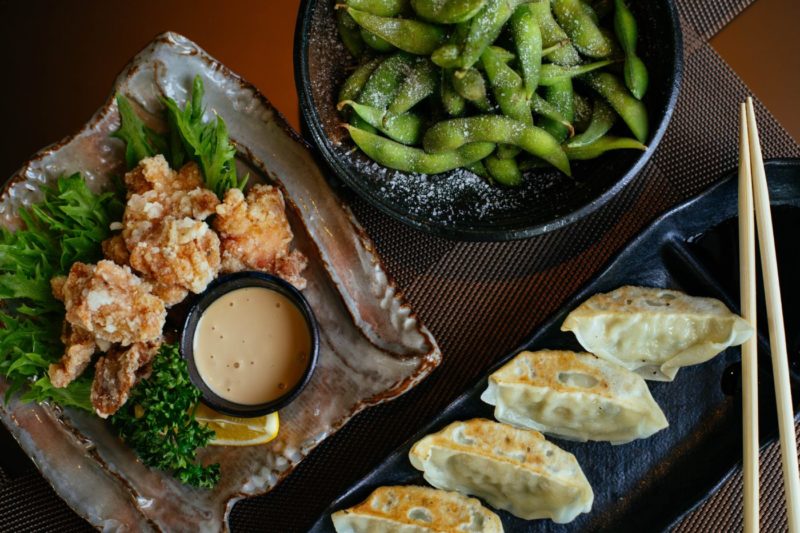
Wondering how to use your soybeans in the kitchen? Here are a few recipe ideas to spark your culinary imagination.
Spicy Yellow Soybean, Lentil, and Carrot Curry – Did you know you can use dried soybeans like any other beans? Try this comforting vegetarian curry on a cold winter evening.
Soybean Falafel – I’m partial to using chickpeas for my falafels, but here’s a recipe that uses soybeans instead.
Homemade Tofu – Make tofu at home with this simple how-to guide.
Homemade Tempeh – Made from fermented soybeans, this vegan favorite is tastier and better for you than regular ole’ tofu!
What do you like to do with your harvested edamame? I prefer to eat them blanched with a bit of salt. They make a great side dish for sushi, too.

